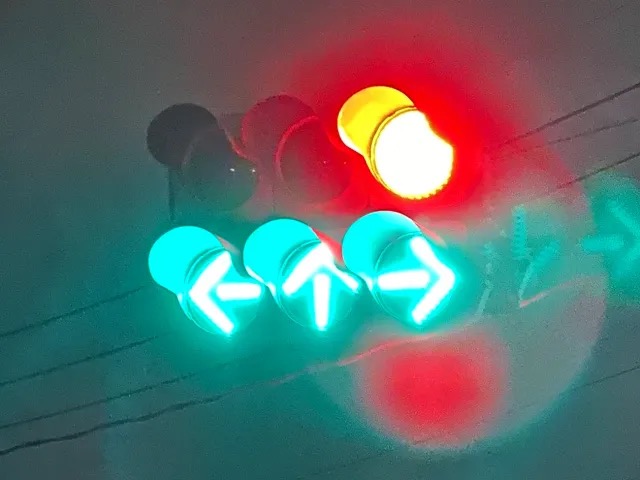
If you’re driving in Japan, don’t be caught out by seeing red and green signals together.
A lot of road traffic rules are pretty straightforward in Japan, but one situation that could make you freeze for a moment is when you come across a traffic light at an intersection that has a big red stoplight on it, but green arrows in all directions underneath.
▼ When you approach a red light while driving, your first instinct is to hit the brakes, so what are you meant to do at this intersection?
Well, in a nutshell, this is a sign to proceed through the intersection in all directions that are green.
▼ So why not just use a green light, and what’s the purpose of the red?
The reason why the red light is shown is because it signals that oncoming traffic is currently stopped at a red light. Unlike regular traffic lights, which simply display green to drivers and pedestrians travelling in both directions along the same stretch of road, these special traffic lights run on a differentiated system, whereby one lot of traffic is given right of way for set periods.
These types of lights are generally installed to prevent congestion at intersections where there are more right-turning vehicles than usual. This system assists these drivers by ensuring that oncoming traffic has stopped and pedestrian signals are red, therefore making it safe to proceed with right turns without having to slow down as much as they would otherwise.
▼ At this moment, all pedestrian signs at the intersection are red and the lights for traffic heading across the intersection from left, right, and straight ahead are red as well.
As long as the light above the green arrows remains red, the light for everyone else crossing the intersection remains red. So when their lights change, these lights do too, making things potentially more confusing for first-timers.
As the lights are generally aimed at drivers turning right, the amber light in the sequence above lets these drivers know that oncoming traffic is about to stop. When it hits red, the right arrow turns green, giving them the go-ahead to turn right.
So how do you know when to stop at these traffic lights? Well, all lights will switch off and the amber light will be shown, followed by…
▼…the red stoplight on its own.
The solitary red light is the signal for traffic to stop, until the green directional arrows appear again. Whenever these green arrows are visible, it’s safe to proceed in the directions shown, regardless of whether or not there’s a red light next to them, although it’s important to remain cautious in case pedestrians and cars don’t abide by the signals.
So what might initially be a confusing, head-scratcher of a system is actually a pretty ingenious one designed to keep things running smoothly while safeguarding drivers and pedestrians. It’s one of many interesting things to learn about on the roads, once you’ve gone through the rigmarole of acquiring a Japanese driver’s license!
Photos © SoraNews24
● Want to hear about SoraNews24’s latest articles as soon as they’re published? Follow us on Facebook and Twitter!
[ Read in Japanese ]